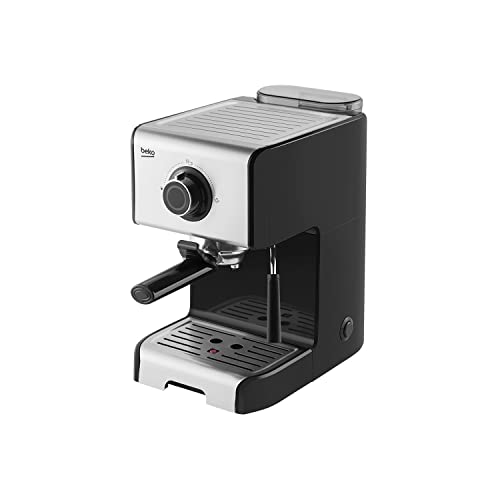How to Make Espresso Machine Coffee
Espresso machines can produce a delicious cup, but they require more maintenance and setup than a standard coffee maker. It also requires that you grind and tap your own beans.
The most important ingredient in making espresso is pressure. Here's how an espresso maker works: a heating vessel warms water to the perfect temperature, then it pushes it through the grounds and out the spouts.
Temperature
Espresso is produced by forcing hot water through finely ground coffee. The temperature of the water is crucial to the quality of the final shot. Low temperatures lead to a absence of flavor compounds. High temperatures can cause over extraction and can cause burnt or bitter tastes.
The ideal temperature for espresso is between 195 and 205 degrees Fahrenheit. This temperature can be achieved by using a grouphead designed to maintain an unchanging temperature and stability throughout the brewing process. The most popular type of group head is the E61, which provides an array of temperature stability, pre-infusion capabilities, and lever control.
It is important to consider the temperature when you adjust your espresso machine for different roasts or brew ratios. This can impact the extraction yield as well as the crema. The ideal temperature will vary according to the roast and bean. However the general rule is that lighter roasts with higher brew speeds require higher temperatures. A good thermocouple is crucial to keep an even temperature.
Pressure
During the brewing process espresso machine coffee is pressure-pushed through finely ground and tamped grounds. This triggers chemical reactions that remove flavors, oils and other soluble components. The beverage produced is usually more flavorful and richer.
The ideal espresso machine pressure should be nine bar that's equivalent to the pressure of the ocean at sea level. This is due to the fact that it is at this pressure that the soluble compounds in espresso beans are the easiest to extract.
Some espresso machines boast up to 20 bars of pressure. While these machines may attain these levels of pressure however, they might not be able to maintain that level of pressure throughout the extraction.
To put that in perspective To put it in perspective, one bar of pressure equals 32 pounds per square inch PSI of the tire of a car. It's nearly four times the pressure a professional cyclist applies to their bicycle tires. The ability to control espresso machine's pressure and make consistent espressos is essential for any serious home barista.
Water
Water is an essential component in a good cup of espresso. The correct water will allow your beans to extract their maximum potential. However the wrong type of water could cause problems like clogging pipes and damage to your expensive machine.
For the best extraction of espresso it is recommended to choose the natural spring that has a high mineral content. This water will elevate the taste of your brew without the chalky mineral traces you get from tap water or bottled water. This is an excellent alternative to distillation or reverse osmosis water, that can be too pure and can cause issues with flavor.

However, you should not use filters that remove excessive minerals from your tap water, because this could cause extraction and flavor issues. A good solution is to purchase a water test kit which will give you your local average water hardness. This information can be used to identify the correct filtration system to your espresso machine.
Beans
Most coffee aficionados tend to get very involved with the entire process of making espresso. They obsess about a number factors, such as temperature, pressure of water and viscosity. If one variable is off even slightly the whole shot could taste bad.
The beans used are the most important factor when it comes down to espresso. Many people believe that only certain kinds are suitable for espresso. While certain beans are suitable for specific purposes however, any coffee bean that has been roasted can be used to make espresso. espresso machines for home are roasted longer than regular coffee beans, which is beyond the second crack. This makes them appear darker and makes them more water-soluble.
Dark or medium roasted beans are ideal for espresso, since they give the shots a richness and a boldness. However, it is possible to make great espresso using light-roasted beans, particularly if these beans are ground (for convenience in an espresso machine).
Milk
Espresso and milk are a traditional combination. The combination of milk and espresso is an iconic. Not only does it increase energy however, it also balances the bitterness in the espresso. There aren't many culinary pairings better than this one!
When choosing an espresso machine capable of making latte or the cappuccino as well be sure to think about the ease to use. A lot of the top espresso machines come with the jug which can be filled with cold or hot milk along with a steam wand and an espresso portafilter to pull the shot. Some models have an integrated grinder, tamper, or frother.
To get rid of any condensed water the steam wand should be cleaned every day prior to use (or after every cup of espresso). The process takes only 30 seconds, yet it is vital to ensure that your machine stays running smoothly. If you don't cleanse, it can cause bitter taste or a buildup of bacteria which can alter the flavor or aroma of your beverage. It's easy to do and should be part of your regular maintenance routine.
